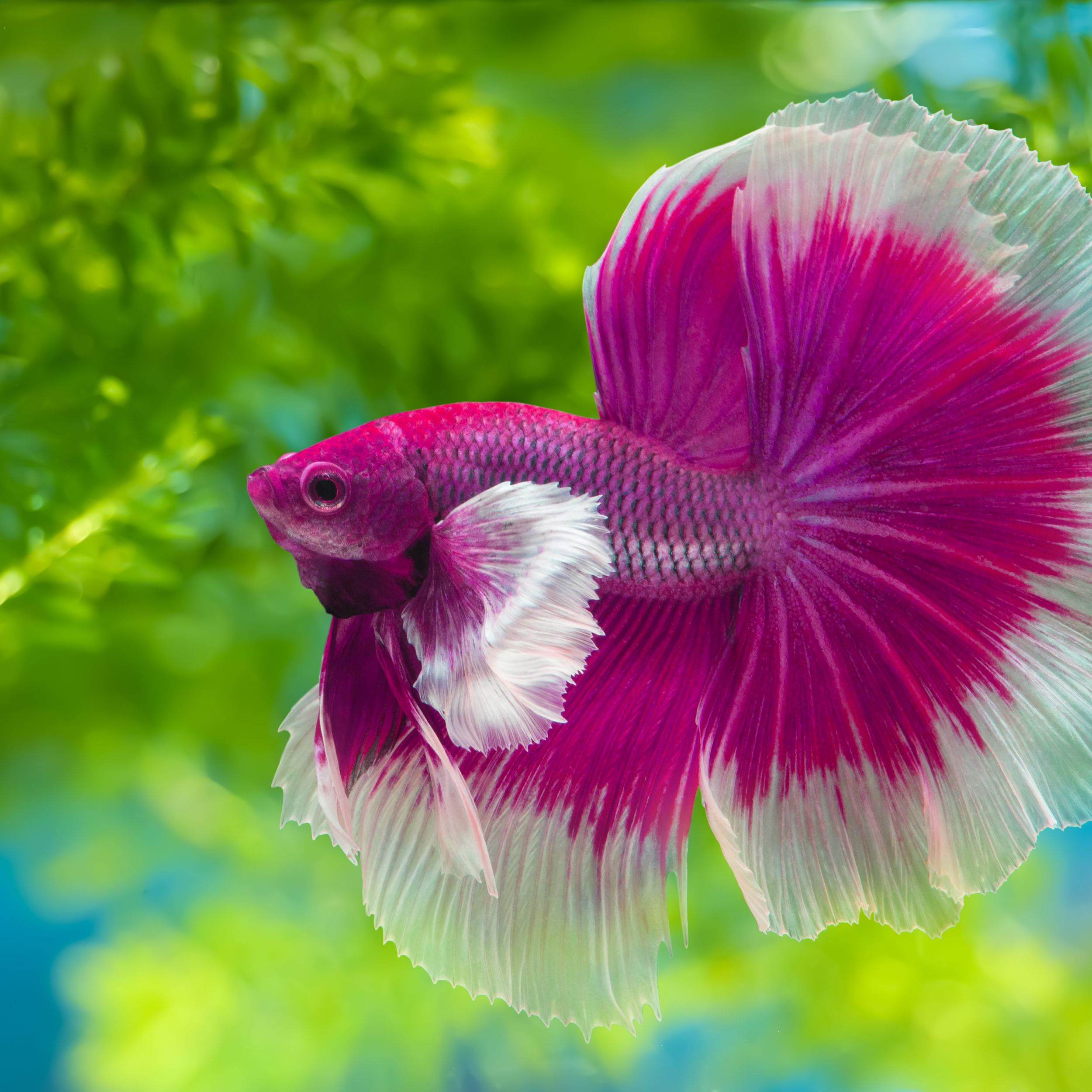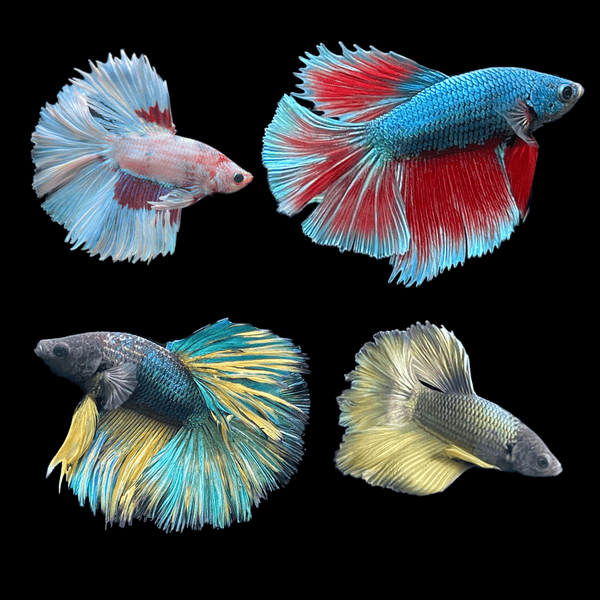Betta Fish Tank Arrangement: A Step-by-Step Guide for Beginners
Betta Fish Tank Arrangement: A Step-by-Step Guide for Beginners
Blog Article
Breeding Betta Fish: a Comprehensive Step-By-Step Overview to Effectively Raising Child Bettas From Eggs to Adulthood
Breeding Betta fish is a meticulous venture that requires careful preparation and execution to make certain the successful advancement of fry from eggs to grow fish. Choosing genetically varied breeding couple with desirable attributes is only the start; developing an optimal environment and comprehending the intricacies of the breeding procedure are just as essential. As the male Betta vigilantly constructs a bubble nest and guards the priceless eggs, the subsequent phases of treatment and change demand attention to detail and expertise of best techniques. How does one navigate the tough yet fulfilling course of supporting these vibrant animals to their adult years?

Picking Breeding Pairs
When starting the trip of reproducing Betta fish, selecting the ideal breeding pairs is essential to accomplishing desirable attributes and a healthy family tree - betta fish. The initial action in this procedure is to recognize the details characteristics you wish to improve or maintain, such as color, fin type, and body shape. It is crucial to choose genetically diverse sets to prevent inbreeding, which can lead to health concerns and undesirable features
Examine possible breeding candidates thoroughly. A healthy and balanced male Betta must show lively colors, an energetic temperament, and well-formed fins, while the female must likewise show dynamic pigmentation and a rounded tummy, suggesting readiness for spawning. Observing the temperament of both fish is essential, as aggressive or extremely reluctant individuals may not reproduce successfully.
Keeping documents of the moms and dad fish's origins can assist you track genetic characteristics and potential concerns. Inevitably, spending time in the selection procedure will significantly boost the possibility of producing strong, lively offspring that meet your breeding objectives.

Preparing the Reproduction Tank
Producing an ideal reproduction setting is an essential step after selecting suitable sets for Betta fish. The breeding container should be particularly developed to supply comfort and boost the natural reproduction actions of the fish. Start with a tank dimension of a minimum of 10 gallons to make certain adequate room for both the male and women Bettas.
Maintain a mild purification system to maintain the water clean while staying clear of strong currents that can emphasize the fish. Additionally, an air stone can be contributed to offer oxygenation without interrupting the water surface area way too much.
Temperature level policy is critical; aim for a secure range of 78-82 ° F(25-28 ° C) making use of a reliable heating unit. The pH level ought to be kept in between 6.5 and 7.5, and normal water changes are required to make sure high water quality.
Include floating plants or spawning mops to produce concealing places for the female, while likewise urging bubble nest structure by the male - betta fish. Ultimately, make certain the storage tank is cost-free from sharp designs and any kind of prospective threats, as the welfare of the fish ought to constantly be prioritized during this important phase of breeding.
The Reproduction Refine
Normally, the reproducing process for Betta fish involves a series of distinctive and observable behaviors that indicate readiness for reproduction. The male Betta begins by constructing a bubble nest at the water's surface area, which serves as a site for the fed eggs. This nest is crucial, as it offers a safe setting for the eggs till they hatch out.
Once the nest is developed, the man will certainly show courtship behaviors, such as flaring his fins and displaying lively shades to attract the female. The woman, upon picking up the man's readiness, will respond by displaying vertical stripes along her body, indicating her receptiveness.
The fed eggs then drop to the bubble nest, where the male very image source carefully gathers and returns them to the nest. Following this, the male presumes duty for securing the nest and guaranteeing the security of the eggs up until they hatch out, typically within 24-36 hours.
Taking Care Of Betta Fry
Looking after Betta fry requires cautious attention to their environment and nourishment to ensure healthy development and growth. After hatching, Betta fry are incredibly little and vulnerable, demanding a secure and clean habitat. Maintaining a water temperature level between 78 ° F and 80 ° F is vital, as Betta fry grow in cozy conditions. In addition, make sure that the water is complimentary of unsafe toxins; normal water changes of 10-20% are recommended to preserve optimum water top quality.
Feeding Betta fry is just as crucial. Feed them small amounts numerous times a day, being mindful not to overfeed, which can lead to water top quality concerns.
Transitioning to Grownup Bettas
As Betta fry fully grown, transitioning them to adult Bettas is a critical stage that calls for cautious monitoring of their environment and social interactions. This procedure commonly starts when the fry reach around 6 weeks old, at which factor they can be gradually introduced to an extra structured living environment.
To promote this transition, it is vital to ensure that the water specifications-- such as temperature, pH, and ammonia degrees-- are optimal and steady. Adult Betta fish grow in cozy water (around 78-80 ° F) with a pH of 6.5 to 7.5. Progressively adapt the fry to these problems to reduce stress.
Social communications are another key aspect; male Bettas are infamously territorial and aggressive. For that reason, it is recommended to different men right into private tanks as they mature. Women Bettas can be housed with each other, but treatment should be required to monitor for signs of aggressiveness.
Furthermore, nutritional modifications ought to be made as the fry grow. Incorporate high-quality pellets and live foods to sustain their development and health. By managing these elements efficiently, you can promote a click to investigate successful change to the adult years for your Betta fish.

Verdict
Effective breeding of Betta fish requires cautious attention to detail throughout the entire procedure, from selecting genetically diverse pairs to offering optimal treatment for fry. Furthermore, a balanced diet plan and progressive company website adjustment to adult environments are vital for the growth and growth of Betta fish.
Report this page